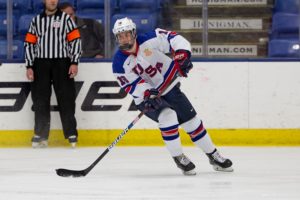
USA Hockey’s National Team Development Program, familiarly known in global hockey circles as the NTDP, is now entering its third decade of existence. The “Program” had a humble launch in 1997-98, with little or no fanfare. Today it enjoys its role as a junior hockey machine, a two-year program that generates IIHF medals every January and April. Whether or not it is
the best use of our national governing body’s resources is debatable, but there is no questioning the tangible results of the NTDP, in both team and individual success for American hockey.
The paradigm of small-group sport specialization has a long history worldwide.
Back in the Cold War era, nations behind the Iron Curtain would sequester their elite athletes to improve international results, the Olympics in particular. The Russian Red Army under Viktor Tikhonov comes to mind, with his 11-month-a-year boot camps in Moscow and beyond, a sports dictator who created a global hockey dynasty under his iron fist in the 1970s and ’80s. Despite a slew of gold medals, it left a trail of psychologically scarred players.
USA Hockey’s Ben Smith (Gloucester, Mass.) centralized his 2002 Olympic women’s team for not one, but two seasons, taking the best and brightest American student-athletes to the cultural gulag of Lake Placid, Smith doing everything in his power in defense of Olympic gold. The result was disheartening — his team lost the gold-medal game to Canada on home soil. His troops were ill, burned out and couldn’t get out of their uniforms fast enough, eager to enjoy freedom away from the rink.



